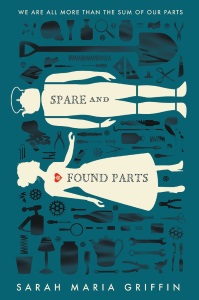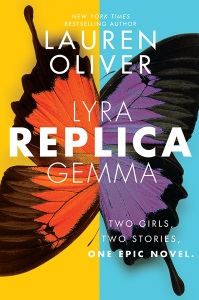Dystopian teen heroes
These four novels envision authoritarian societies, some in the future, some not-so-futuristic, that cause their teenage protagonists to take revolutionary action.
 Under Little Town's strict Regime, no one crosses the border to or from Old Country — until the Duda family arrives as refugees. Protagonist Charlie befriends teenager Pavel Duda and tries to teach him to remain unnoticed. But when Little Town begins to crumble — literally and figuratively — under Old Country's encroaching military rule, Charlie can no longer avoid the fray. Brian Conaghan's dense, dark novel The Bombs That Brought Us Together presents a dystopia that, unlike the settings of many similar novels, is not set comfortably in the future; with its parallels to the Cold War and contemporary conflicts of ethnic versus political borders, it is all too easy to envision today. (Bloomsbury, 14 years and up)
Under Little Town's strict Regime, no one crosses the border to or from Old Country — until the Duda family arrives as refugees. Protagonist Charlie befriends teenager Pavel Duda and tries to teach him to remain unnoticed. But when Little Town begins to crumble — literally and figuratively — under Old Country's encroaching military rule, Charlie can no longer avoid the fray. Brian Conaghan's dense, dark novel The Bombs That Brought Us Together presents a dystopia that, unlike the settings of many similar novels, is not set comfortably in the future; with its parallels to the Cold War and contemporary conflicts of ethnic versus political borders, it is all too easy to envision today. (Bloomsbury, 14 years and up) In the post-apocalyptic Black Water City of Sarah Maria Griffin's Spare and Found Parts, Nell must complete her "contribution," a project meant to advance the city's progress following the disastrous end of a computer-run society. Nell's idea — creating a mechanical boy with salvaged computer intelligence to be an ambassador for the reintroduction of computer technology — is met with revulsion: "It could cause a disaster…that kind of greed belongs in the past." Part Pinocchio, part Frankenstein's monster, Nell's construction allows the story authentic depths of horror and moral disquiet. The author's unusual prose is lush, providing thorough world-building, but carries the main character's emotions without overstatement. (Greenwillow, 14 years and up)
In the post-apocalyptic Black Water City of Sarah Maria Griffin's Spare and Found Parts, Nell must complete her "contribution," a project meant to advance the city's progress following the disastrous end of a computer-run society. Nell's idea — creating a mechanical boy with salvaged computer intelligence to be an ambassador for the reintroduction of computer technology — is met with revulsion: "It could cause a disaster…that kind of greed belongs in the past." Part Pinocchio, part Frankenstein's monster, Nell's construction allows the story authentic depths of horror and moral disquiet. The author's unusual prose is lush, providing thorough world-building, but carries the main character's emotions without overstatement. (Greenwillow, 14 years and up) With new technology, mortality has become a thing of the past, with one exception: "scythes" are responsible for "gleaning," or killing, their fellow citizens to restrict population growth to a sustainable rate. Teens Citra Terranova and Rowan Damisch, stars of Neal Shusterman's Scythe, are both horrified and intrigued when a scythe selects them as his apprentices, to train with him for one year and compete to see which one will become a scythe. Shusterman's moral questions increase the story’s intensity as the stakes get higher, leading to a philosophical exploration of life and death within a high-action adventure. (Simon, 14 years and up)
With new technology, mortality has become a thing of the past, with one exception: "scythes" are responsible for "gleaning," or killing, their fellow citizens to restrict population growth to a sustainable rate. Teens Citra Terranova and Rowan Damisch, stars of Neal Shusterman's Scythe, are both horrified and intrigued when a scythe selects them as his apprentices, to train with him for one year and compete to see which one will become a scythe. Shusterman's moral questions increase the story’s intensity as the stakes get higher, leading to a philosophical exploration of life and death within a high-action adventure. (Simon, 14 years and up) Readers of Lauren Oliver's Replica are invited to start at either end of the volume, reading one of the two protagonists' stories to the end, or alternating back and forth. Lyra is a "replica" (or clone) who's always lived in Haven, a bioresearch facility. She and wealthy Gemma, who's grown up in and out of hospitals, are thrown together when the two find a sudden opportunity to escape their prisonlike homes. As in any good thriller, shadowy men in black, car chases, and startling discoveries follow. Neither heroine knows the full story, but readers can piece it together after reading both parts. With Oliver's clever crafting, readers will be clamoring for the next book in the projected series. (Harper/HarperCollins, 14 years and up)
Readers of Lauren Oliver's Replica are invited to start at either end of the volume, reading one of the two protagonists' stories to the end, or alternating back and forth. Lyra is a "replica" (or clone) who's always lived in Haven, a bioresearch facility. She and wealthy Gemma, who's grown up in and out of hospitals, are thrown together when the two find a sudden opportunity to escape their prisonlike homes. As in any good thriller, shadowy men in black, car chases, and startling discoveries follow. Neither heroine knows the full story, but readers can piece it together after reading both parts. With Oliver's clever crafting, readers will be clamoring for the next book in the projected series. (Harper/HarperCollins, 14 years and up)From the February 2017 issue of Notes from the Horn Book.

RECOMMENDED
ALREADY A SUBSCRIBER? LOG IN
We are currently offering this content for free. Sign up now to activate your personal profile, where you can save articles for future viewing.






Add Comment :-
Be the first reader to comment.
Comment Policy:
Comment should not be empty !!!